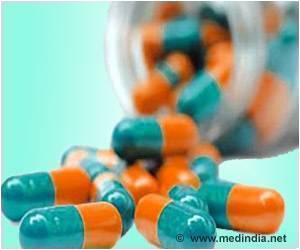Scientists have identified why certain combination therapies are in fact worse than standalone drug treatments.
Scientists have identified why certain combination therapies are in fact worse than standalone drug treatments. These findings are important as combination drug therapy has become a staple for treating many infections.
Doctors treat extensively drug resistant forms of tuberculosis with one drug that breaks down the pathogen's protective barriers and opens the door for another to deliver the deathblow."The question we asked was how it can be that two drugs in combination are less effective than one of them alone," said senior author and Harvard Medical School associate professor of systems biology Roy Kishony.
Kishony and his team claim that the answer lies in the way some antibiotic drugs influence a bacterial cell's gene expression levels.
Combinations of these altered genetic behaviors can "put the cell in a better position for survival," he added.
According to first author and research fellow in systems biology Tobias Bollenbach, clinical researchers are primarily interested in drugs that together work better than either alone, and so studies tend to focus on explaining some of the mechanisms behind synergistic drug pairings.
Kishony has discovered that antagonistic drug pairings slow down the evolution of antibiotic resistance, which suggests drug combinations warrant further study.
Advertisement
Normally, when a cell is in a stressful state it responds by trying to repair itself and by scaling back on its other activities, such as production of ribosome's, the molecular machines that manufacture proteins.
Advertisement
When the team added the additional stress of a protein-synthesis inhibiting drug, such as Tetracycline, instead of causing the cells more trouble, the second drug counteracted the overproduction of ribosomes and proteins.
The team conducted a second round of experiments in which they impaired the ability of E. coli to produce ribosomes. As a result, the cells could more easily withstand the assault of the first drug, yet succumbed to the second, completely removing the strong antagonism between the drugs.
This work "suggests that there are things about antibiotics and other inhibitors that we never suspected," said University of British Columbia microbiologist Julian Davies,
"We are so naive about how drugs work. We are so naive about the activities of these compounds once they are actually in human beings. What I think will be important about this work is that people will be able to design model studies with animals. If one can reproduce these results in animal models, they could be adapted to a human situation," Davies added.
The study appears in journal Cell.
Source-ANI
RAS







